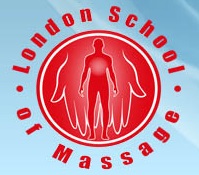Human Anatomy and Physiology is a course whose content is relevant to us all. The more we know about our bodies, and how they work – and sometimes do not – the better equipped we are to look after ourselves and maintain our health.

About this ITEC Anatomy, Physiology & Pathology Diploma Course
Human Anatomy and Physiology is the study of human beings — the structure of our bodies and the way they work. Pathology is the study of diseases, or put another way, physiology that has gone wrong!
Human Anatomy and Physiology is a course whose content is relevant to us all. The more we know about our bodies, and how they work – and sometimes do not – the better equipped we are to look after ourselves and maintain our health.
This course is offered as part of our Distance Learning and Home Study program which will guide you through comprehensive notes and workbooks around the human body and its functioning.The course follows the ITEC Anatomy, Physiology & Pathology for Complimentary Therapists syllabus and is graded at level 3 (QCF) which is a nationally recognised qualification.
Anatomy, Physiology & Pathology forms the foundation stone for many courses in complementary and massage therapies. It is an ideal course for students wishing to study human anatomy and also for those in the fields of medical studies, complementary therapies and bodywork.
Completion of this course may provide exemption and count as credits towards other advanced courses.
What will I learn in this Anatomy, Physiology & Pathology Course
Each topic will be followed up by the learning of some of the common pathologies (different diseases which affects that system).
The course material will include a full course file and workbooks (PDF version) as well as mock multiple choice papers for exam preparation. You will also be guided to useful websites which will assist your home learning.
The course will cover the full ITEC Level 3 (QCF) syllabus in Anatomy, Physiology & Pathology for Complementary Therapists and cover the following topics:
Cells and their Organelles
Different types of Tissues and their classification
Skin - its different layers and functions
Skeletal Systems - composition, types and function of bones & joints
Muscular System - different types of muscles, their composition and function.
Cardiovascular System - Heart structures and function, Blood Vessels and Blood Circulation
Lymphatic System - Lymph glands and production of Tissue Fluid
Respiratory System - Lungs and air pathway and exchange of gases
Neurological System - Brain structures and function and Nervous Tissue
Endocrine System - Main endocrine organs and role of hormones
Genito-Urinary System - Kidneys and water metabolism
Pathology and diseases of the various body systems
Anatomy, Physiology & Pathology Course Prerequisites
This course is open to any aspiring individual who has an interest in the study of Anatomy & Physiology or is usng it to advance onto other courses and complementary therapies.
It is a Level 3 Qualification and QCF accredited.
ITEC Anatomy, Physiology & Pathology Course Length
Home Study Course
This course can be studied in your own time and you can submit your course work when you are ready, and then we can schedule your exam. This course must be completed within 1-year of enrolment.
Mixed Mode Course
This course is a combination of home study and class study. The class study element would coincide with our Massage Level 3 Course dates, where students would just come in for the morning sessions to cover the Anatomy, Physiology and Pathology element. This course must be completed within 1-year of enrolment.
Anatomy, Physiology & Pathology Course Exams
Home Study
At the end of each module there will be short questions and tasks which will be completed at home as a learning resource, these should submitted to the school via e-mail or post.
Evening Course
At the beginning of each week there will be short test based on the previous week's learning.
Assignment
There is one home assignment to be completed by students.
Exams
For either the Home Study or Evening Course there will also be a final multiple choice exam of 50 x Questions on Anatomy, Physiology & Pathology which will need to be completed by attending our London school's in either Harrow or King's Cross .
The London School of Massage was established in 1994 and is regarded as the UK's most successful Body Therapy and Massage Training School, by both its examiners and profession at large. The teaching of our courses comes from Experience, Knowledge, and Passion and we use this to produce some of the most talented professionals practicing today.
Our belief is that Complementary Therapies have an important role to play in the well-being of individuals. They are a useful tool that can work well alongside conventional medicine. Training thus emphasises the development of a holistic perspective, and benefits of treatment are not just for the "physical", but also for the "mind" and "spirit".
We have developed a reputation which amounts to excellence and many top clubs and spa's, such as Virgin Active, Sanctuary and Champney's have recruited our students as well as recommend our courses for post graduate development.
© 2025 coursetakers.com All Rights Reserved. Terms and Conditions of use | Privacy Policy